- Home
- Jane Austen
Sense and Sensibility (Barnes & Noble Classics Series)
Sense and Sensibility (Barnes & Noble Classics Series) Read online
Table of Contents
From the Pages of Sense and Sensibility
Title Page
Copyright Page
Jane Austen
The World of Jane Austen and Sense and Sensibility
Introduction
Volume the First.
CHAPTER I.
CHAPTER II.
CHAPTER III.
CHAPTER IV.
CHAPTER V.
CHAPTER VI.
CHAPTER VII.
CHAPTER VIII.
CHAPTER IX.
CHAPTER X.
CHAPTER XI.
CHAPTER XII.
CHAPTER XIII.
CHAPTER XIV.
CHAPTER XV.
CHAPTER XVI.
CHAPTER XVII.
CHAPTER XVIII.
CHAPTER XIX.
CHAPTER XX.
CHAPTER XXI.
CHAPTER XXII.
Volume the Second.
CHAPTER I.
CHAPTER II.
CHAPTER III.
CHAPTER IV.
CHAPTER V.
CHAPTER VI.
CHAPTER VII.
CHAPTER VIII.
CHAPTER IX.
CHAPTER X.
CHAPTER XI.
CHAPTER XII.
CHAPTER XIII.
CHAPTER XIV.
Volume the Third.
CHAPTER I.
CHAPTER II.
CHAPTER III.
CHAPTER IV.
CHAPTER V.
CHAPTER VI.
CHAPTER VII.
CHAPTER VIII.
CHAPTER IX.
CHAPTER X.
CHAPTER XI.
CHAPTER XII.
CHAPTER XIII.
CHAPTER XIV.
Inspired by Sense and Sensibility
Comments & Questions
For Further Readinz
From the Pages of Sense and Sensibility
“The more I know of the world the more am I convinced that I shall never see a man whom I can really love. I require so much!” (page 15)
“That is what I like; that is what a young man ought to be. Whatever be his pursuits, his eagerness in them should know no moderation, and leave him no sense of fatigue.” (page 38)
“There is something so amiable in the prejudices of a young mind, that one is sorry to see them give way to the reception of more general opinions.” (page 47)
“Seven years would be insufficient to make some people acquainted with each other, and seven days are more than enough for others.” (page 49)
“I have no wish to be distinguished; and I have every reason to hope I never shall. Thank Heaven! I cannot be forced into genius and eloquence.” (page 75)
“At my time of life opinions are tolerably fixed. It is not likely that I should now see or hear any thing to change them.”
(page 77)
“You are in a melancholy humour, and fancy that any one unlike yourself must be happy. But remember that the pain of parting from friends will be felt by every body at times, whatever be their education or state. Know your own happiness. You want nothing but patience—or give it a more fascinating name, call it hope.” (page 85)
“He is such a charming man, that it is quite a pity he should be so grave and so dull.” (page 96)
“A man who has nothing to do with his own time has no conscience in his intrusion on that of others.” (page 166)
There was a kind of cold-hearted selfishness on both sides, which mutually attracted them; and they sympathised with each other in an insipid propriety of demeanour, and a general want of understanding. (page 188)
Because they neither flattered herself nor her children, she could not believe them good-natured; and because they were fond of reading, she fancied them satirical: perhaps without exactly knowing what it was to be satirical. (page 201 )
Elinor agreed to it all, for she did not think he deserved the compliment of rational opposition. (page 206)
She said little, but every sentence aimed at cheerfulness; and though a sigh sometimes escaped her, it never passed away without the atonement of a smile. (page 281)
Published by Barnes & Noble Books
122 Fifth Avenue
New York, NY 10011
www.barnesandnoble.com/classics
Sense and Sensibility was first published in 1811.
Published in 2004 by Barnes & Noble Classics with new Introduction,
Notes, Biography, Chronology, Inspired By, Comments & Questions,
and For Further Reading.
Introduction, Notes, and For Further Reading
Copyright @ 2003 by Laura Engel.
Note on Jane Austen, The World of Jane Austen and Sense and Sensibility,
Inspired by Sense and Sensibility, and Comments & Questions
Copyright © 2004 by Barnes & Noble, Inc.
All rights reserved. No part of this publication may be reproduced or
transmitted in any form or by any means, electronic or mechanical,
including photocopy, recording, or any information storage and
retrieval system, without the prior written permission of the publisher.
Barnes & Noble Classics and the Barnes & Noble Classics colophon are
trademarks of Barnes & Noble, Inc.
Sense and Sensibility
ISBN-13: 978-1-59308-125-6 ISBN-10: 1-59308-125-1
eISBN : 978-1-411-43314-4
LC Control Number 2004101427
Produced and published in conjunction with:
Fine Creative Media, Inc.
322 Eighth Avenue
New York, NY 10001
Michael J. Fine, President and Publisher
Printed in the United States of America
QM
7 9 10 8
Jane Austen
The English novelist Jane Austen was born December 16, 1775, the seventh of eight children, in the Parsonage House of Steventon, Hampshire, where she spent her first twenty-five years. During her brief lifetime Austen witnessed political unrest, revolution, war, and industrialization, yet these momentous events are not the central subjects of her finely focused novels. Rather, Austen wrote of her immediate experience: the microcosm of the country gentry and its class-conscious insularity. Jane’s father, the Reverend George Austen, was the erudite country rector of Steventon, and her mother, Cassandra (née Leigh), was descended from an aristocratic line of learned clergymen. By no means wealthy, the Austens nonetheless enjoyed a comfortable, socially respectable life, and greatly prized their children’s education.
Jane and her beloved elder (and only) sister, Cassandra, were schooled in Southampton and Reading for a short period, but most of their education took place at home. Private theatrical performances in the barn at Steventon complemented Jane’s studies of French, Italian, history, music, and eighteenth-century fiction. An avid reader from earliest childhood, Jane began writing at age twelve, no doubt encouraged by her cultured and affectionate family. Indeed, family and writing were her great loves; despite a fleeting engagement in 1802, Austen never married. Her first two novels, “Elinor and Marianne” and “First Impressions,” were written while at Steventon but never published in their original form.
Following her father’s retirement, Jane moved in 1801 with her parents and sister to Bath. That popular watering hole, removed from the country life Jane preferred, presented the sociable young novelist with a wealth of observations and experience that would later emerge in her novels. Austen moved to Southampton with her mother and sister after the death of her father in 1805. Several years later the three women settled in Chawton C
ottage in Hampshire, where Austen resided until the end of her life. She relished her return to the countryside and, with it, a renewed artistic vigor that led to the revision of her early novels. Sense and Sensibility, a reworking of “Elinor and Marianne,” was published in 1811, followed by Pride and Prejudice, a reworking of “First Impressions,” two years later.
Austen completed four more novels (Mansfield Park, Emma, Northanger Abbey, and Persuasion) in the Chawton sitting room. Productive and discreet, she insisted that her work be kept secret from anyone outside the family. All of her novels were published anonymously, including the posthumous release, thanks to her brother Henry, of Northanger Abbey and Persuasion.
The last years of Austen’s life were relatively quiet and comfortable. Her final, unfinished work, Sanditon, was put aside in the spring of 1817, when her health sharply declined and she was taken to Winchester for medical treatment of what appears to have been Addison’s disease or a form of lymphoma. Jane Austen died there on July 18, 1817, and is buried in Winchester Cathedral.
The World of Jane Austen and Sense and Sensibility
1775 The American Revolution begins in April. Jane Austen is born on December 16 in the Parsonage House in Stev enton, Hampshire, England, the seventh of eight chil dren (two girls and six boys).
1778 Frances (Fanny) Burney publishes Evelina, a seminal work in the development of the novel of manners.
1781 German philosopher Immanuel Kant publishes his Critique of Pure Reason.
1782 The American Revolution ends. Fanny Burney’s novel Ce cilia is published.
1783 Cassandra and Jane Austen begin their formal education in Southampton, followed by study in Reading.
1788 King George III of England suffers his first bout of mental illness, leaving the country in a state of uncertainty and anxiety. George Gordon, Lord Byron, is born.
1789 George III recuperates. The French Revolution begins. William Blake’s Songs of Innocence is published.
1791 American political philosopher Thomas Paine publishes the first part of The Rights of Man.
1792 Percy Bysshe Shelley is born. Mary Wollstonecraft pub lishes A Vindication of the Rights of Woman.
1793 A shock wave passes though Europe with the execution of King Louis XVI of France and, some months later, his wife, Marie-Antoinette; the Reign of Terror begins. En gland declares war on France. Two of Austen’s brothers, Frank (1774-1865) and Charles (1779-1852), serve in the Royal Navy, but life in the countryside of Steventon remains relatively tranquil.
1795 Austen begins her first novel, “Elinor and Marianne,” written as letters (the fragments of this early work are now lost); she will later revise the material to become the novel Sense and Sensibility. John Keats is born.
1796- 1797 Austen authors a second novel, “First Impressions,” which was never published; it will later become Pride and Prejudice.
1798 Poets Samuel Taylor Coleridge and William Wordsworth publish The Lyrical Ballads.
1801 Jane’s father, the Reverend George Austen, retires, and with the Napoleonic Wars looming in the background of British consciousness, he and his wife and two daughters leave the quiet country life of Steventon for the bustling, fashionable town of Bath. Many of the characters and depictions of society in Jane Austen’s subsequent novels are shaped by her experiences in Bath.
1803 Austen receives her first publication offer for her novel “Susan,” but the manuscript is subsequently returned by the publisher; it will later be revised and released as Northanger Abbey. The United States buys Louisiana from France. Ralph Waldo Emerson is born.
1804 Napoleon crowns himself emperor of France. Spain de clares war on Britain.
1805 Jane’s father dies. Jane and her mother and sister sub sequently move to Southampton. Sir Walter Scott pub lishes his Lay of the Last Minstrel.
1809 After several years of traveling and short-term stays in various towns, the Austen women settle in Chawton Cot tage in Hampshire; in the parlor of this house Austen quietly composes her most famous works. Charles Darwin and Alfred, Lord Tennyson, are born.
1811 Austen begins Mansfield Park in February. In November Sense and Sensibility, the romantic misadventures of two sisters, is published with the notation “By a Lady”; all of Austen’s subsequent novels are also brought out anony mously. George III is declared insane, and the morally corrupt Prince of Wales (the future King George IV) be comes regent.
1812 Fairy Tales by the Brothers Grimm and the first parts of Lord Byron’s Childe Harold are published. The United States declares war on Great Britain.
1813 Pride and Prejudice is published; it describes the conflict between the high-spirited daughter of a country gentle man and a wealthy landowner. Napoleon is exiled to Elba, and the Bourbons are restored to power.
1814 Mansfield Park is published; it is the story of the difficult though ultimately rewarded life of a poor relation who lives in the house of her wealthy uncle.
1815 Napoleon is defeated at Waterloo.
1816 Austen’s comic novel Emma is published, centering on the heroine’s misguided attempts at matchmaking. Char lotte Brontë is born.
1817 Austen begins the satiric novel Sanditon, but abandons it because of declining health. She dies on July 18 in Win chester and is buried in Winchester Cathedral.
1818 Northanger Abbey, a social satire with overtones of (paro died) terror, and Persuasion, about a reawakened love, are published under Austen’s brother Henry’s supervi sion.
Introduction
Sense and Sensibility, Jane Austen’s first published novel, tells the story of the lives, loves, and longings of two sisters, the sensitive, romantic Marianne and the practical, even-tempered Elinor. With its extended cast of supporting characters, including the garrulous Mrs. Jennings, the stern Mr. Palmer, and the censorious Mrs. Ferrars, Sense and Sensibility revolves around two narratives: the possible romances of Elinor and Marianne Dashwood and the day-to-day existence of everyone else. The constant anxiety that pervades the story stems from the possibility that the sisters may have to make do with the mundanity of country life, cluttered with gossip, clamor, and superficiality, instead of being swept away by the men of their dreams. In typical Austen fashion we are made aware from the outset that Marianne’s choice of suitor, the dashing and theatrical Willoughby, may be a disaster. Elinor’s more subdued love object, the shy and awkward Edward Ferrars, on the other hand, just might prove himself worthy if he could manage to articulate a full sentence.
Austen began working on Sense and Sensibility in 1795 with an epistolary fragment entitled “Elinor and Marianne” (now lost). The final version was not published until 1811, with a second edition issued in 1813 (Austen-Leigh, Jane Austen: Her Life and Letters, p. 8o; see “For Further Reading”). Once described as “bleak, dark, and nasty” compared with the “brightness” of Pride and Prejudice or the complexity of her more mature works Emma, Mansfield Park, and Persuasion, Sense and Sensibility has recently undergone a critical renaissance. New editions, renewed scholarship, and a critically acclaimed film version have put the novel center stage.
Sense and Sensibility is a coming-of-age novel, and also a work that chronicles Austen’s own “coming of age”—her development as a writer. When she began working on “Elinor and Marianne” she was only twenty, a young woman with the possibility of courtship, marriage, and family open to her. By the time the second edition of the novel was released, Austen had moved from Hampshire to Bath, lost her adoring father, been disappointed in love, rejected a marriage proposal, and relocated again with her mother and sister to Chawton, where she turned her attention to writing. Austen’s sense of herself in the world must have been influenced by her close relationship with her only sister, Cassandra, who similarly was disappointed in love and in the awkward position of elder spinster aunt to a large and noisy upper-middle-class country family.
The only surviving portrait of Austen, a watercolor sketch by her sister, depicts the author as a plain, pensive subject with lar
ge eyes and a slight hint of a smile. She appears proper and subdued, unlike the description of her by a family friend, who pronounced her “certainly pretty—bright & a good deal of colour in her face—like a doll” (Tomalin, Jane Austen: A Life, p. 108). Austen’s niece Anna’s view of her aunt matches Cassandra’s portrayal of her: “Her complexion [is] of that rare sort which seems the particular property of light brunettes: a mottled skin, not fair, but perfectly clear and healthy; the fine naturally curling hair, neither light nor dark; the bright hazel eyes to match the rather small, but well shaped nose” (Austen-Leigh, p. 240) .
In keeping with Austen’s status as a respectable daughter of a clergyman, Sense and Sensibility was first published anonymously. The initial advertisement for the novel, which appeared in the Morning Chronicle on October 31, 1811, refers to the author as “A Lady.” A subsequent notice in the same paper on November 7, 1811, bills the work as “an extraordinary novel by A Lady.” A few weeks later the book was announced as “an Interesting Novel by Lady A” (Austen-Leigh, p. 254). Austen apparently made some money on the first edition. Her biographers Richard and William Austen-Leigh note that the £140 profit from the first edition of Sense and Sensibility was a considerable sum compared to the lesser proceeds her female contemporaries earned from their novels—the £30 Fanny Burney gained from sales of Evelina or the £100 Maria Edgeworth received for Castle Rackrent (Austen-Leigh, p. 255).

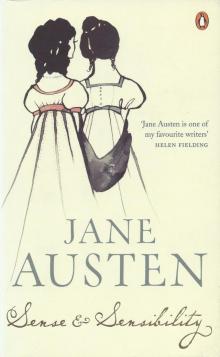 Sense and Sensibility
Sense and Sensibility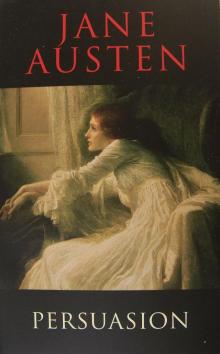 Persuasion
Persuasion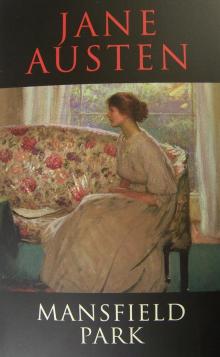 Mansfield Park
Mansfield Park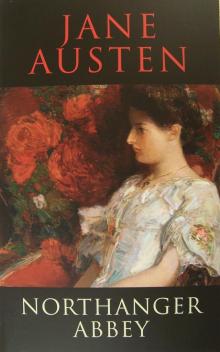 Northanger Abbey
Northanger Abbey Pride and Prejudice and Zombies
Pride and Prejudice and Zombies Pride and Prejudice
Pride and Prejudice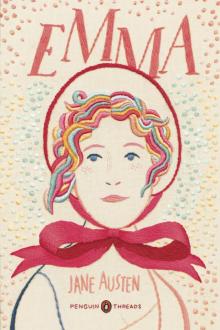 Emma
Emma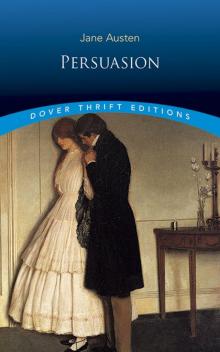 Persuasion (Dover Thrift Editions)
Persuasion (Dover Thrift Editions)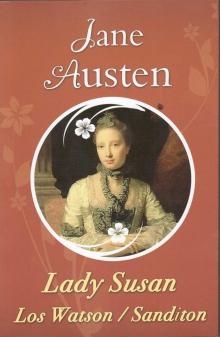 Lady Susan
Lady Susan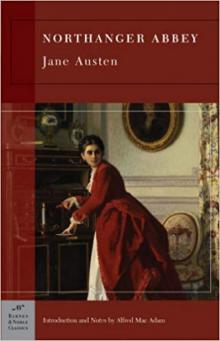 Northanger Abbey (Barnes & Noble Classics)
Northanger Abbey (Barnes & Noble Classics)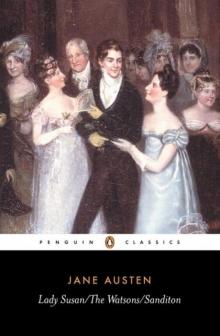 Lady Susan, the Watsons, Sanditon
Lady Susan, the Watsons, Sanditon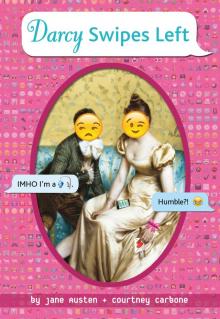 Darcy Swipes Left
Darcy Swipes Left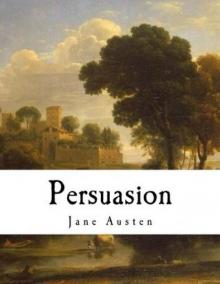 Persuasion: Jane Austen (The Complete Works)
Persuasion: Jane Austen (The Complete Works)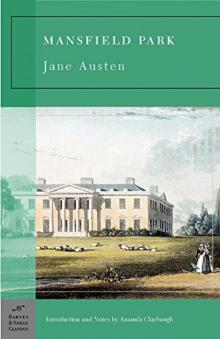 Mansfield Park (Barnes & Noble Classics Series)
Mansfield Park (Barnes & Noble Classics Series) Sense and Sensibility (Barnes & Noble Classics Series)
Sense and Sensibility (Barnes & Noble Classics Series)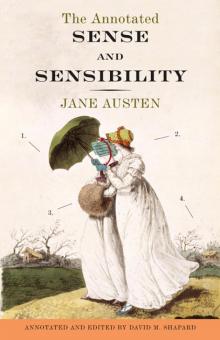 The Annotated Sense and Sensibility
The Annotated Sense and Sensibility Pride and Prejudice (Clandestine Classics)
Pride and Prejudice (Clandestine Classics)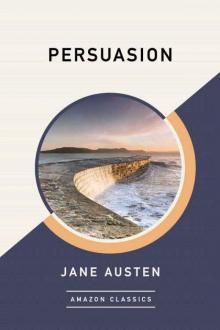 Persuasion (AmazonClassics Edition)
Persuasion (AmazonClassics Edition)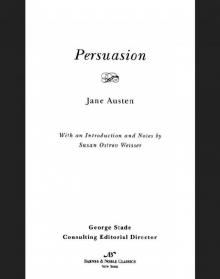 Persuasion (Barnes & Noble Classics Series)
Persuasion (Barnes & Noble Classics Series)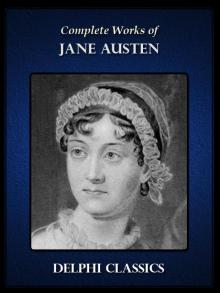 Complete Works of Jane Austen
Complete Works of Jane Austen The Watsons and Emma Watson
The Watsons and Emma Watson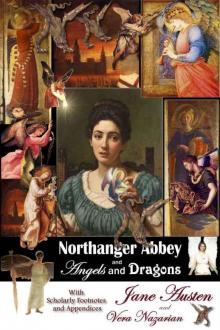 Northanger Abbey and Angels and Dragons
Northanger Abbey and Angels and Dragons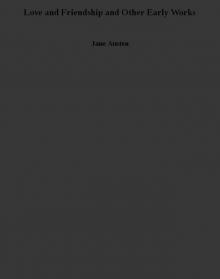 Love and Friendship and Other Early Works
Love and Friendship and Other Early Works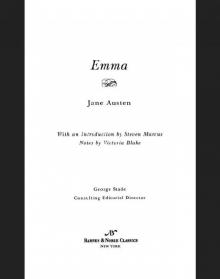 Emma (Barnes & Noble Classics Series)
Emma (Barnes & Noble Classics Series) Sanditon
Sanditon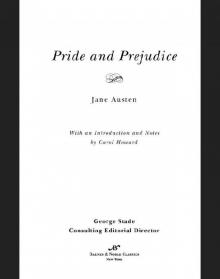 Pride and Prejudice (Barnes & Noble Classics Series)
Pride and Prejudice (Barnes & Noble Classics Series)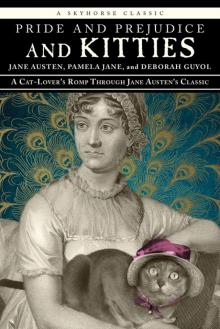 Pride and Prejudice and Kitties
Pride and Prejudice and Kitties The Annotated Northanger Abbey
The Annotated Northanger Abbey Oxford World’s Classics
Oxford World’s Classics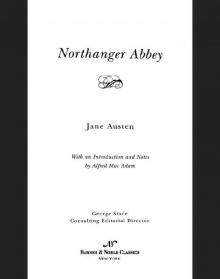 Northanger Abbey (Barnes & Noble Classics Series)
Northanger Abbey (Barnes & Noble Classics Series)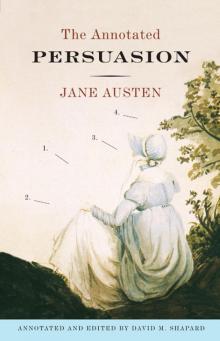 The Annotated Persuasion
The Annotated Persuasion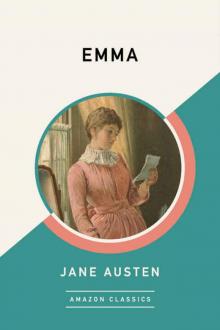 Emma (AmazonClassics Edition)
Emma (AmazonClassics Edition)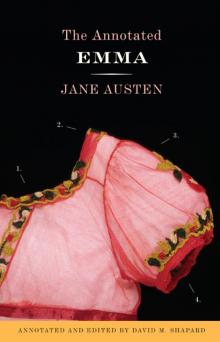 The Annotated Emma
The Annotated Emma The Annotated Mansfield Park
The Annotated Mansfield Park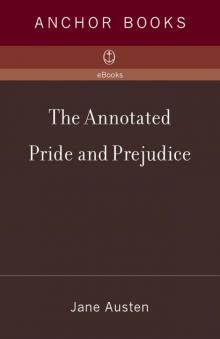 The Annotated Pride and Prejudice
The Annotated Pride and Prejudice